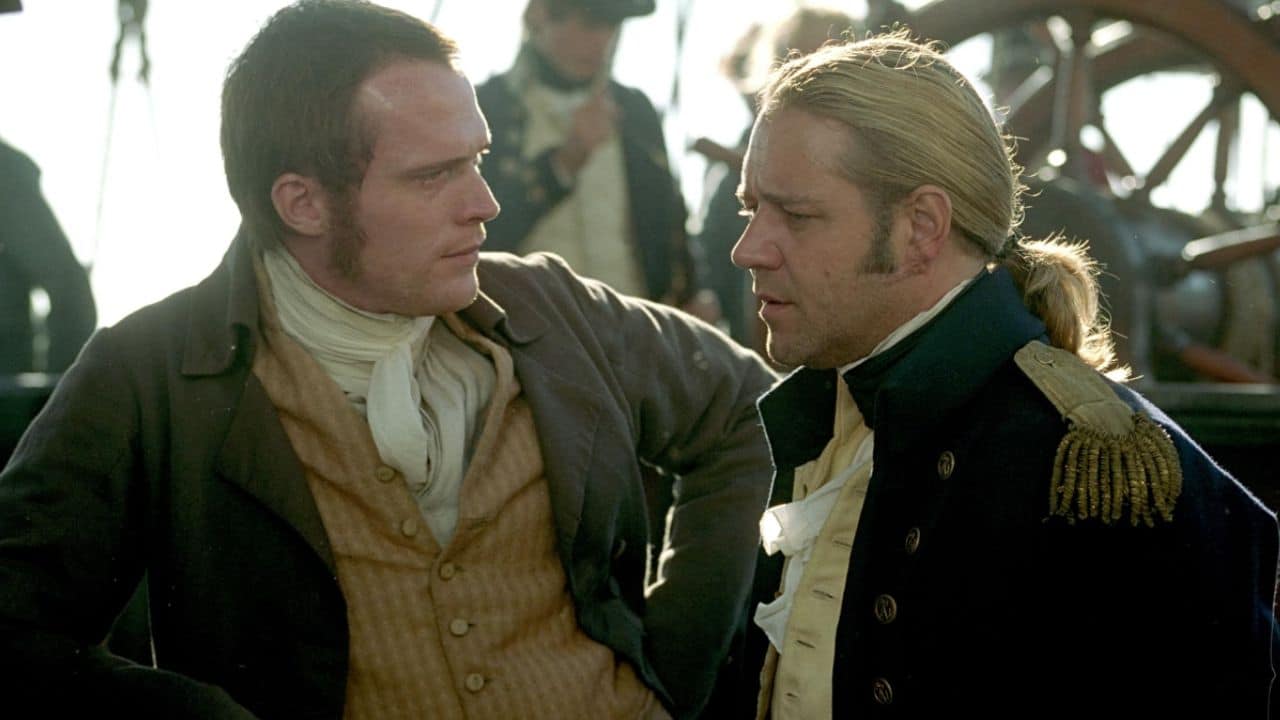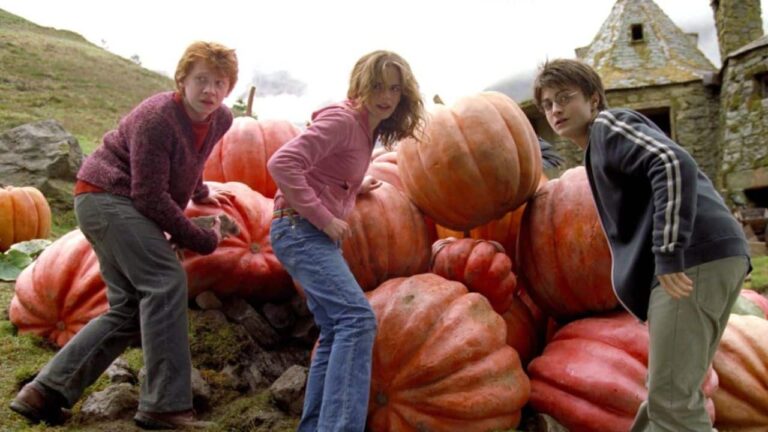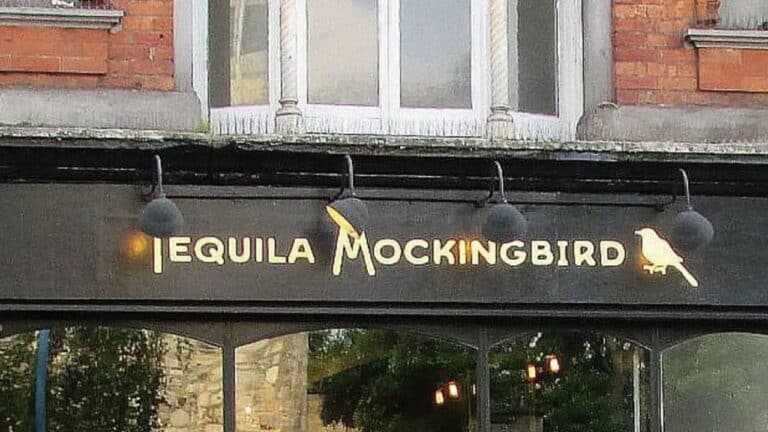20 Epic Films a Surprising Number of People Haven’t Seen

These days, moviegoers rush to watch films about battling superheroes, smooching tennis players, and existential fashion dolls.
For much of cinema history, however, film fans loved to watch epics. Epics tell long stories about battles and grand deeds, often from history or mythology. Films such as Lawrence of Arabia, Gone With the Wind, and The Lord of the Rings trilogy broke box office records and proved the viability of cinema as an art form.
Yet many modern moviegoers haven’t watched these great epics, some of which defined film art and others that just slipped through the cracks. To get caught up, look no further.
1. The Adventures of Robin Hood (1938)

Everyone knows the story of Robin Hood, the character from English folklore who stole from the rich and gave to the poor. In fact, Robin Hood’s enduring popularity drives studios to make big-budget movies about the characters every decade or so.
Some modern viewers might dismiss 1938’s The Adventures of Robin Hood as old-fashioned and cheesy, given its bright colors and tights-wearing hero, portrayed by Errol Flynn. However, anyone who looks past the conventions will find a delightful adventure, one that set the stage for every action movie that followed. Directors Michael Curtiz and William Keighley create a true spectacle, one sure to delight audiences today.
2. 2001: A Space Odyssey (1968)

The first trailer for Barbie generated a lot of excitement and confusion. Half the audience rolled their eyes, while others didn’t even realize that the trailer recreated a key scene from Stanley Kubrick’s 2001: A Space Odyssey. 2001 became a blockbuster hit in its time and influenced almost every filmmaker who saw it. Yet, today, it has a reputation as slow and obtuse, which puts off many modern viewers.
Without question, 2001: A Space Odyssey does have its slow moments and an unusual ending that doesn’t hold the viewers’ hand. However, it still has all the transcendent power it had in 1968. Whether newcomers watch because of Barbie fever or because of an appreciation for great sci-fi, 2001: A Space Odyssey promises to challenge and inspire.
3. Ran (1985)

The Japanese master Akira Kurosawa made some of the greatest movies of all time, including Seven Samurai and Yojimbo. However, even many dedicated movie buffs haven’t seen his late-period film Ran. Co-written by Kurosawa, Hideo Oguni, and Masato Ide, Ran brings Shakespeare’s King Lear to Sengoku-period Japan.
Tatsuya Nakadai stars as Ichimonji Hidetora, an aging warlord who wants to secure his legacy by dividing his kingdom among his three sons, Taro (Akira Terao), Jiro (Jinpachi Nezu), and Saburo (Daisuke Ryu). When Saburo pushes back against his father’s values, he gets exiled, leading to a divide that tears the kingdom apart. Awesome in scale and stunning with its gorgeous red imagery, the movie is a must-see.
4. War and Peace (1966)

Epic films tend to have long runtimes, but 1966’s War and Peace takes it to an extreme. Released in four separate installments, War and Peace spans a staggering 431 minutes. That’s a tough ask for even the most devoted moviegoer.
Buoyed by funding from the Soviet government, who wanted to prove that Russia could outdo the productions of the West, director Sergei Bondarchuk creates lush landscapes and jaw-dropping battle scenes, some with over 1000 extras.
Furthermore, Bondarchuk takes the leading role in War and Peace, portraying Pierre Bezukhov alongside Ludmila Savelyeva as Natasha Rostova. The film traces the rise and fall of Bezukhov and his best friend Prince Andrei Bolkonsky, (Vyacheslav Tikhonov), whose lives revolve around wars between Russia and Napoleon’s France.
5. Sorcerer (1977)

Where most epic films have grand casts that portray noble families and battles that shape the course of history, Sorcerer focuses on just four men, all of whom have been rejected by society. The quartet has one job: transporting dynamite across a jungle in South America.
That might sound simple, but director William Friedkin and screenwriter Walon Green, remaking the 1953 French movie The Wages of Fear, raise the stakes to titanic heights. The degrading dynamite leaks nitroglycerin, so that the slightest disruption causes it to explode. Friedkin underscores danger facing the men with every shot, captured in images of trucks making their way through rugged terrain, the tense score from Tangerine Dream, or the creases on lead actor Roy Scheider’s forehead.
6. The Ten Commandments (1956)

The Cecil B. DeMille-directed Biblical The Ten Commandments film can still count on viewings every Easter or Passover, as the faithful remember the story of Moses in glossy classical Hollywood form. However, later generations either skip the story altogether or go for more accessible versions, such as the DreamWorks animated picture The Prince of Egypt.
The Ten Commandments does have odd elements. Setting aside the idea of WASP Charlton Heston playing Hebrew leader Moses, his big, theatrical style doesn’t match the more realistic style of acting preferred today. However, once viewers give into the drama of the production, they’ll be awed by its sweeping visuals and powerful performances, not just from Heston, but also from Yul Brynner as his Egyptian brother Ramses II.
7. Three Thousand Years of Longing (2022)

Australian director George Miller made one of the best movies of the century with 2015’s Mad Max: Fury Road. And yet, audiences skipped out on his follow-up, Three Thousand Years of Longing. Based on the short stories of A.S. Byatt, Three Thousand Years of Longing stars Tilda Swinton as a professor of folklore and Idris Elba as the Djinn she releases.
With its romantic tone and episodic structure, Three Thousand Years of Longing feels very different from the explosive Mad Max films. But Miller, who co-wrote the screenplay with Augusta Gore, still has all of his top-shelf filmmaking chops. The film creates dreamlike worlds and impossible sequences, all grounded by Elba in a career-best performance.
8. The Leopard (1963)

Directed by Luchino Visconti and based on the novel by Giuseppe Tomasi di Lampedusa, The Leopard wowed audiences all over the world. It took home the Palme d’Or at the 1963 Cannes Film Festival and broke box office records in Europe. But American audiences gave The Leopard a cold shoulder despite reliable American star Burt Lancaster in the lead.
Lancaster plays Don Fabrizio Corbera, a Sicilian nobleman whose way of life is threatened by the 19th-century Italian unification movement. American viewers may not appreciate the political and historical significance of Don Fabrizio’s predicament. But everyone, even modern viewers, can understand the emotional cost of the Don’s situation, brought to life by Lancaster’s dignified take.
9. Hero (2002)

Thanks to the success of Ang Lee’s Crouching Tiger, Hidden Dragon, American audiences fell in love with Wuxia, the Chinese movie genre based around historical heroes with magical Kung Fu abilities. The newfound popularity of Wuxia made Chinese and Hong Kong stars such as Jet Li and Tony Leung bankable names in the United States. Hero grossed $53.7 million in the U.S., but it hasn’t had the same cultural impact as other imports from the era.
Set during a period of division known as the the Warring States Period in ancient China, Hero stars Li as Nameless, a prefect who defends the king (Chen Daoming) from powerful assassins. With a cast that includes Leung, Maggie Cheung, and Donnie Yen, and with gorgeous direction from Zhang Yimou, Hero promises to captivate viewers, even those unfamiliar with the specific historical situation.
10. Metropolis (1927)

Because they often take place in the past, epic movies can sometimes feel separated from modern concerns. No one can level that charge against Metropolis, even though it’s a silent film released almost a century ago. Directed by Fritz Lang and written by Thea von Harbou, Metropolis takes place in a future world where the rich and powerful enjoy lives of leisure, made possible by the precarious labor of workers in the underworld.
After a vision that imagines factories as the pagan god Moloch, Freder (Gustav Fröhlich), son of the city’s master (Alfred Abel), endeavors to uncover the suffering and inequality that makes his life possible. Between its powerful imagery, including the robotic Maschinenmensch, and its progressive politics, Metropolis remains as relevant as it was a century ago.
11. Once Upon a Time in America (1984)

Italian director Sergio Leone made some of the greatest Westerns of all time, including the Man With No Name trilogy starring Clint Eastwood. Few filmmakers had a better sense of America’s mythic power, which he sought to capture in Once Upon a Time in America, starring Robert De Niro and James Woods. But when American distributors balked at the almost four-hour cut that Leone submitted, thirty minutes shorter than his initial version, they chopped almost in half and released that movie to widespread disgust.
Now that cinephiles can find the full cut of Once Upon a Time in America on home media, many have revisited and found it among the best movies ever made. Leone brings the same sense of grandeur found in his Westerns, this time applying it to gangsters in 1930s New York.
12. The Man Who Would Be King (1975)

Based on the novel by Rudyard Kipling, The Man Who Would Be King stars Sean Connery and Michael Caine as two former British soldiers who become mercenaries in the East. Directed by John Huston, who made great adventure films such as The Treasure of the Sierra Madre and The Maltese Falcon, The Man Who Would Be King in many ways, recalls Lawrence of Arabia, which many consider the greatest film epic ever made.
Yet, The Man Who Would Be King has a cynical streak, not unlike those found in Huston’s best works. The British soldiers reflect their country’s imperial hubris, making them unlikeable, if still awe-inspiring, figures.
13. Master and Commander: The Far Side of the World (2003)

Based on the novels by Patrick O’Brian, Master and Commander: The Far Side of the World enjoyed mild success at the box office and even earned ten Oscar nominations. However, outside of a very devoted group of cinema buffs, Master and Commander sailed out of the public consciousness.
It’s easy to see why so many skip over Master and Commander. Its 138-running time tests the patience of some, and naval combat doesn’t have the same immediate appeal as spaceships or superheroes. But director Peter Weir, who co-wrote the movie with John Collee, makes the battles feel vast and keeps everything grounded, thanks to delightful takes from Russell Crowe and Paul Bettany.
14. Battleship Potemkin (1925)

Clocking in at just over an hour long, the Russian silent movie Battleship Potemkin is the shortest film on this list. But director Sergei Eisenstein does more in that hour than most filmmakers could do in a day, proving his mastery over the form.
Battleship Potemkin recreates an important moment in Soviet History, in which the crew of the titular Imperial ship rebelled against its officers. In addition to furthering the fight against the Tzar, the mutiny represented the Communist ideals celebrated by the film’s first audiences. Modern viewers may not feel the same about the themes of Battleship Potemkin, but they can still admire Eisenstein’s groundbreaking filmmaking.
15. Aguirre: The Wrath of God (1972)

In his article on Lawrence of Arabia, the great movie critic Roger Ebert mentioned Aguirre: The Wrath of God when defining the epic film genre. “What you realize watching Lawrence of Arabia is that the word epic refers not to the cost or the elaborate production, but to the size of the ideas and vision,” he explained. “Werner Herzog’s Aguirre: The Wrath of God didn’t cost as much as the catering in Pearl Harbor, but it is an epic, and Pearl Harbor is not.”
Aguirre earns that praise because of the intensity brought by director Herzog and star Klaus Kinski. Herzog wastes little time on dialogue and score, and instead watches the mad Kinski, playing Spanish conquistador Lope de Aguirre, lead his army through the Amazon.
16. The Thin Red Line (1998)

Epics tend to mythologize real battles, turning soldiers into heroes and war into civilization’s defining event. Director Terrence Malick elevates the Battle of Mount Austen from World War II into a moment of cosmic importance. But he does so through meditative images of wind blowing through the trees and thoughtful voiceover.
Based on the novel by James Jones, The Thin Red Line boasts a cast that includes some of the biggest stars of the day, including George Clooney, Sean Penn, and John Travolta. However, Malick famously edited out much of the footage, turning the focus on Private Witt, played by newcomer Jim Caviezel. This approach heightens the dreamlike sense of The Thin Red Line, making it one of the most unique epics ever made.
17. The Message (1976)

Directed and produced by Moustapha Akkad, best known for producing 1978’s Halloween, The Message seeks to do for Islam what Cecile B. DeMille did for Christianity. However, it faces a unique challenge because of the religion’s restriction on visual depictions of the prophet Muhammed. Thus, The Message tells the life of the Prophet without ever showing him on screen.
The results are mixed but fascinating. The English-language version, filmed alongside an Arabic-language version with a different principal cast, features Anthony Quinn, Irene Papas, and Michael Ansara, all as people whose lives intersect with that of Muhammed. Even if it falls short of Akkad’s goal, The Message remains an entertaining watch.
18. The Woman King (2022)

Emboldened by the success of Marvel’s Black Panther, director Gina Prince-Bythewood and writer Dana Stevens sought to create an African historical epic with The Woman King, the story of the Agojie, the elite female fighting force used by the Dahomey Kingdom in the 19th century. Viola Davis plays General Nanisca, who leads the Agojie against European slavers.
Like all historical epics, The Woman King fudges the details of some events. But it makes up for accuracy with spectacular visuals, including visceral fight scenes and Lashana Lynch electrifying the screen as Nanisca’s lieutenant Izogie.
19. RRR (2022)

The Indian Telugu-language movie RRR (short for Roudram Ranam Rudhiram) became something of a phenomenon among Western moviegoers starving for spectacle after the close of the pandemic. Theaters held raucous showings of the movie, and it even won the Oscar for Best Original Song.
But like most phenomena, the passion died down and people stopped talking about RRR. They shouldn’t. Even when watched at home, RRR still offers a delirious good time, complete with unbelievable fight scenes from director S. S. Rajamouli and captivating leads in N. T. Rama Rao Jr. and Ram Charan, two warrior pals who find their allegiances tested.
20. Reds (1981)

Reds is the passion project of Warren Beatty, the handsome New Hollywood figure who starred in Bonnie and Clyde and Heaven Can Wait. As a bankable name with friends in show business, Beatty could assemble a solid co-writer in Trevor Griffiths and an all-star cast, which included Diane Keaton, Jack Nicholson, Gene Hackman, and more. But audiences of the ‘80s weren’t interested in a three-hour-plus story of an American’s chronicle of the Russian Revolution, so the film struggled to make back its budget.
However, even in 1981, Reds enjoyed critical praise. That praise still stands, as Reds takes a refreshing and grounded approach to major world events. The revolution still feels huge, but Reds never loses sight of the people involved.





